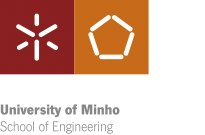Tuesday, 5/2/2017
The Software Engineering team from the High Assurance
Software Laboratory (HASLab) of the School of Engineering of the University of
Minho (EEUM) recently had two publications accepted in the very top journals in
the area.
Alcino Cunha (professor
from the Department of Informatics of the EEUM), Nuno Macedo and Paolo Masci
(researchers from the HASLab of the EEUM), together with their co-authors, had
papers accepted at the journal IEEE – Transactions on Software Engineering
(TSE). TSE is a top-tier journal in the area of Software Engineering, which is
interested in well-defined theoretical results and empirical studies that have
potential impact on the construction, analysis, or management of software.
Titled "A
feature-based classification of model repair approaches", the paper of
Alcino Cunha and Nuno Macedo addresses Model-Driven Engineering (MDE), which is
a software development methodology that focuses on creating and exploiting
domain models. As the popularity and application scenarios of MDE expand,
numerous techniques have been developed to address varied tasks in specific
contexts. This research focuses specifically on model repair techniques,
essential to manage consistency in evolving MDE environments. The article
proposes a classification system for model repair techniques, based on features
identified through a literature review of existing approaches. The goal is to
assist developers and researchers in comparing their work under a unifying and
supportive framework and MDE practitioners in choosing appropriate techniques
for their particular needs.
Paolo Masci has submitted
the publication "A PVS-Simulink integrated environment for model-based
analysis of cyber-physical systems", also to the IEEE – Transactions on
Software Engineering journal. The article presents a methodology, with a
support tool, for integrated modelling and analysis of software components in
cyber-physical systems. Cyber-physical systems are autonomous smart systems
that involve high connectivity and integration of heterogeneous components. An
example of a cyber-physical system is a pacemaker device that monitors and
controls the contraction of the heart to maintain the cardiac rhythm within its
physiological range.
The ultimate aim of this
work is to facilitate the introduction of formal verification technologies in
the software development process of cyber-physical systems, which typically
requires the integrated use of different types of models and tools.
+ info: http://haslab.uminho.pt/

